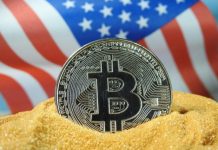
Most investors expect the dollar to appreciate further in 2022. But the best trades may be over even as the year gets off to a start.
Analysts from Citigroup, to Morgan Stanley and Nordea expect a stronger dollar heading into 2022, underpinned by many of the catalysts which supported dollar strength in 2021, with the caveat that its advance may be more muted. That’s because traders have been front-running the Federal Reserve’s interest rate hikes, by buying the greenback against most of its peers. With investors now expecting between three and four Fed hikes in 2022, a tighter monetary policy may already be priced in.
The dollar’s outperformance in 2021 was also underpinned by strong economic growth and double-digit equity returns. Investors poured an astounding $1 trillion of cash into equities in 2021, an amount greater than the sum of equity inflows in the past 19 years. Record inflows have left U.S. stocks at stretched valuations. As the Fed prioritizes fighting inflation over maximizing employment, the prospect of the tighter monetary policy explains why a number of usually bullish Wall Street analysts expect a stock market correction in the year ahead.
Whether you expect the dollar to rise or fall in 2022, you’ll need to open an account with one of the best UK Forex brokers to capitalize on these opportunities. We’ve summarised some downside and upside catalysts below.
Downside catalysts
A stock market correction could also call into question the Fed’s resolve to further tighten monetary policy. Back in 2018, Jerome Powell, the then chairman of the Federal Reserve, withdrew his previously announced policy of shrinking the central bank’s balance sheet following a sharp selloff in the S&P 500. With the same man at the helm of the Fed, most participants expect Powell to blink again if the market corrects.
Whilst many expect inflation to remain above pre-pandemic levels, it is expected to fall in the second half of 2022 as year-on-year comparisons – the notorious base effects – become easier, supply chain disruptions ease, and labor force participation trends higher. A fall in inflation would give the Fed the excuse it needs to slow down or even reverse monetary policy normalization, in order to support asset prices.
Another “Powell Pivot” would trigger a fall in the dollar, and by the same account keep inflation elevated in the US, as the cost of imports rises. This outcome is one that billionaire investors Jeffrey Gundlach, Ray Dallio, and Peter Schiff, long-term dollar bears, have repeatedly warned against. They argue that excess current account and budget deficits will, in the future, lead to a loss of confidence and the dollar’s demise.
Upside catalysts
If the dollar is to rise in 2022, it will need to surprise on the upside. Since Powell was renominated, his hawkish pivot towards a faster taper, earlier rate hikes, and the prospect of quantitative tightening has taken many by surprise.
Stephane Bottine, founder of TrustedBrokers.com makes the case that “the market may under-estimate the Fed’s willingness to tighten early, in a year marked by the U.S. midterm elections, at a time when inflation has become a political thorn for Biden”.
A tightening of financial conditions in the US could happen at a time when other central banks are taking a more gradual approach towards withdrawing monetary stimulus, with a greater focus on supporting economic growth. Policy divergence between leading central banks, if it occurs, would be supportive of the dollar in 2022.
While the ECB will unwind its pandemic era policy measures in 2022, it is planning to increase asset purchases to maintain favorable financing conditions across the Eurozone. China is expected to relax its monetary policy in the face of a self-inflicted property market slowdown. Meanwhile, the Bank of Japan and Swiss National Bank, which went into this pandemic fighting deflation, may remain cautious about removing accommodation.










